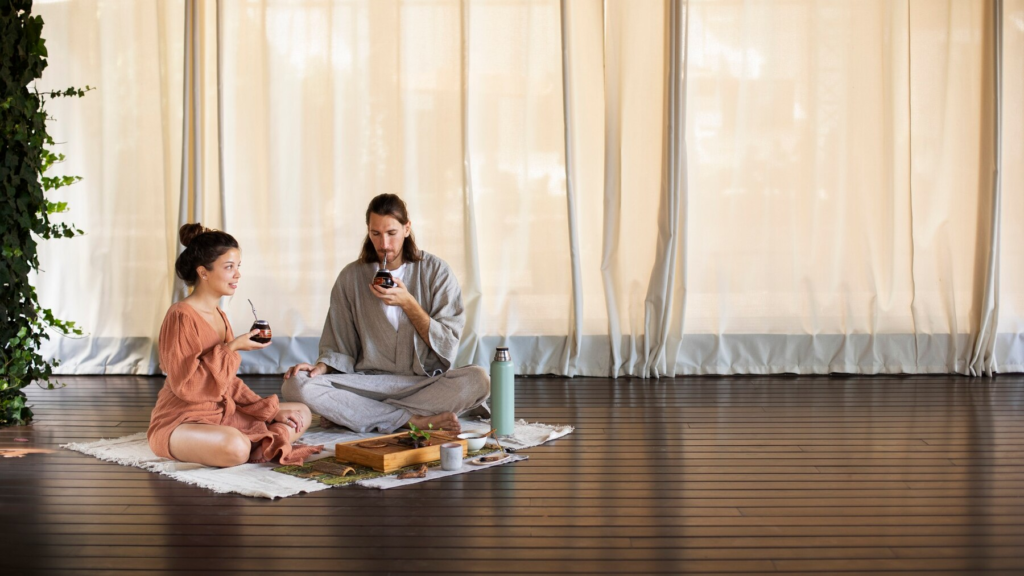When selecting a patio enclosure to create a seamless transition between the indoors and the outdoors, there are several aspects to look into. The transition from house to patio should be smooth and functional. A well-designed patio enclosure can turn an open area into a private space that can be used throughout the year. Here are some tips on how to create a comfortable retreat with patio enclosures:
Define the Perimeter With the Right Structure
A patio enclosure defines a space without confining it in a way that feels restrictive. This can be done by using walls with screens, glass panels, or retractable systems that allow for light and air to circulate while creating a boundary at the same time. These systems help keep insects out, provide shelter from wind and rain, and create a division between the interior and the yard.

Integrate With Existing Architecture
The enclosure should blend with the home’s architecture without looking like an addition. Regardless of whether the house has a modern look, classic vertical siding, or natural stone, the patio cover should incorporate the aspects of your home through materials used, color schemes, and layout. Painting the frame finish in the same color as the home trim or positioning the roof’s enclosure with the main structure will help achieve a more harmonized look. Proper integration helps prevent visual disruption and improves the appearance of the exterior.
Choose Weather-Resistant Materials
The materials used for outdoor patio enclosures should withstand the effects of the sun, rain, and fluctuating temperatures. Some popular materials used in the construction of enclosures are vinyl, composite panels, and tempered glass. These materials are used for their durability and low maintenance requirements. Aluminum frames do not rust easily, while vinyl and composite panels are not prone to warping and fading due to heat exposure. Glazing, which is commonly applied to three-season or four-season structures, offers insulation and a clear view of your yard. Choosing the right materials helps your enclosure be structurally strong and aesthetically free from dirt and grime while being practical and useful.

Promote Proper Installation and Fit
Careful attention to detail is needed when installing a patio enclosure. It needs to be level, firmly fixed on the ground, and adjusted to the size of the space it occupies. Poor installation may result in water leakage, structure shifting, or the creation of gaps that pests can exploit. Regardless of whether the patio surface is concrete, brick pavers, or decking, the components of the enclosure must be compatible with the site conditions. In the case of multilevel patios or those with stairs, the enclosure must account for changes in elevation and transitions while still being functional.
Customize to the Site’s Layout
Patios can differ in size, shape, and position. Some wrap around the home while others extend from the back wall and are constructed into a corner or slope. A well-made patio enclosure takes into account these differences during construction. It may need angled panels, different heights, or variable roof pitches. Customization makes it possible to retain views, incorporate landscaping, or connect directly to pool areas or garden paths. Having a personalized approach makes sure that the enclosure is seamless with the property and does not interfere with it in any way, visually and aesthetically.
Select the Right Type of Enclosure
The type of enclosure should correspond with the intended use of the patio. Screen patio enclosures may be ideal for those who want fresh air while being protected from insects in the evening. Glass enclosures are blocked off from the outdoors, providing a more controlled climate for use during colder months while still offering views. Some enclosures are retractable, which can be opened or closed. The type to choose depends on your lifestyle, geographical location, and how frequently you intend to use the patio.

Work With Patio Enclosures Experts
For an ideal enclosure that is both functional and aesthetically pleasing, hire contractors who offer custom solutions. Professionals can assess your space, suggest the right materials, and offer proper installation. A good patio design should complement the home’s architecture. It should also improve the outdoor living environment and last for years with low maintenance. If you are interested in improving your outdoor living area, consult with a specialist to design a custom patio enclosure.






